The major strength of Realme X3 is the 5x periscope zoom camera and the dual front-facing cameras, which let you shoot portrait-mode videos.
Realme has been in the Indian market for over two years. What started off as the budget sub-brand of Oppo, has now become a mother brand unto itself, diversified into other product categories such as fitness band, true wireless earbud and even a smart TV. Naturally, the smartphones have also moved up the value chain, into the higher-end segment.
In the last year, Realme has launched a couple of firsts – a 64 MP camera sporting smartphone – the Realme XT, a 5G chipset sporting samrtphone – the Realme X50 Pro 5G (even though 5G is pointless in the Indian
market for now). Continuing that trend, Realme has now launched a
periscope telephoto camera module in the Realme X3 SuperZoom smartphone.
While periscope zoom cameras have been around for a while now, none
sell under Rs 30,000. This is slowly becoming a niche trend in
flagships. We have seen periscope zooms in the Huawei P30 Pro and more
recently, Oppo Reno 10X Zoom, Samsung Galaxy S20 Ultra and a clutch of
other devices.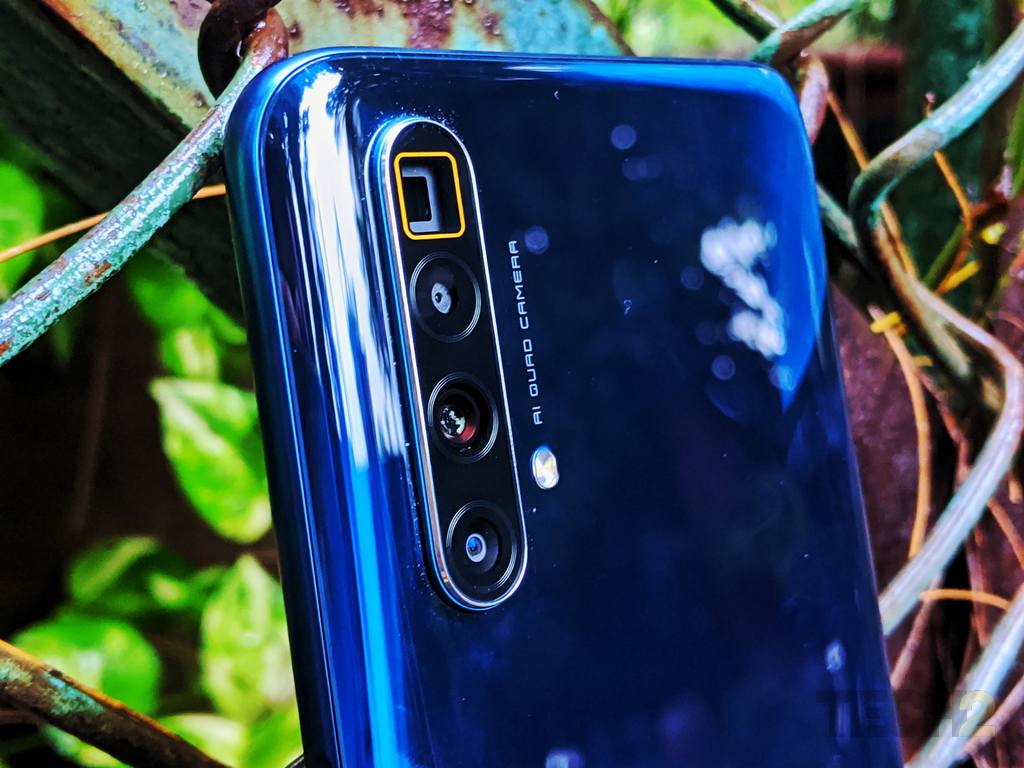
Realme has launched a periscope telephoto camera module in the Realme X3 SuperZoom smartphone.
The Realme X3 SuperZoom is priced at Rs 27,999 for the 8/128 GB variant and Rs 32,999 for the 12/256 GB variant. It’s one step below the flagship Realme X50 Pro 5G. It will compete with Xiaomi’s Redmi K20 Pro and Realme’s own X2 Pro on the price front. It is, however, unique in that there isn’t a periscope-zoom camera in sight under Rs 30,000.
Since the camera is the highlight of this phone, let’s first look at the cameras before anything else. Is the periscope zoom worth all the hype?
Camera takes great daylight photographs, but struggles in low light
The highlight of the Realme X3 SuperZoom is the periscope zoom camera module alongside the 64 MP primary camera. The periscope telephoto camera is an 8 MP sensor with a maximum aperture of f/3.4. This immediately puts it at a disadvantage in low light scenarios, as the amount of light coming in is low compared to the f/1.8 aperture of the primary camera. These two cameras are surrounded by an 8 MP Ultrawide camera and a 2 MP macro camera. On the front, you get a dual selfie camera: a 32 MP with f/2.5 aperture and an 8 MP Ultrawide with f/2.2 aperture.
The periscope telephoto camera does a great job at 5x zoom, giving you a sharp image compared to that same composition cropped from the 64 MP image of the primary camera. In daylight and just as the sun is about the set, you get good quality images, but from dusk onwards, noise starts to become quite apparent in the images. The 10x zoom option is present on the camera interface, but that’s certainly not pure optical zoom, so you get noisy images even during the daytime. And yes, you do get a 60x digital zoom option, but the output is an unusable, noisy mess. It’s objectively bad, and getting a steady frame is a whole other challenge.
Here’s something to note: Only the Ultrawide angle (8 MP), Primary (16
MP binned) and 5x zoom (8 MP) markers are true resolution images. The 2x
and 10x markers are hybrid zooms and it’s quite evident in the final
photos ― they appear like paintings. In daylight photos, the primary
camera does show some purple fringing when images are observed at actual
resolution. There is a noticeable shift in colour temperatures between
the ultrawide angle camera and the primary camera. While the primary
camera produces good images packed with details and textures, I wasn’t
too pleased with the ultrawide angle camera shots. They came across as
too soft irrespective of the lighting conditions. With the primary
camera, the centre and edge sharpness were on point.
5X Periscope Zoom:
There are dual selfie cameras on the Realme X3 SuperZoom, which take great portrait photos during daytime. While the main 32 MP camera produces detailed images, the 8MP ultrawide camera tends to miss the correct exposure. The low-light and indoor shots are overly bright, while the noise reduction algorithms tend to go into overdrive.
Low light images were strictly average. While you can extract details
from the primary camera in the ‘Nightscape’ mode, the other cameras
struggle to produce a noise-free image. The periscope telephoto camera
takes poor images in low light, and here your best option would be to
take a 64 MP image and crop, if you absolutely have to. Low light
photography is certainly not a strong point of the X3. There’s a
‘Starry’ mode as well to capture stars in the sky, provided your phone
is mounted on a tripod. Thanks to the lockdown and Mumbai’s epic light
pollution, you can’t see anything in this mode.
Low light photo:
The video performance was good during daylight, with good detail and less jitter when the ‘UltraSteady’ mode is activated (only works on 1080p 60fps and lower resolution). But the moment the light levels dropped ― around dusk or early mornings ― the focus hunting and softness in video quality increased. The only stabilisation you get is electronic image stabilisation, which tends to show as you are panning the camera or shooting while walking. Shooting with the ultrawide camera results in completely washed out footage. There is an HDR video shooting mode, but honestly, I didn’t notice much difference between regular footage and HDR footage. The 4K video shooting option is advisable only if you are shooting using a gimbal or a tripod, else be prepared for jittery footage the moment you pan.
Daytime video footage:
While the periscope telephoto works fine, it is a bit of a struggle to stabilise the video while recording. Walking and shooting at 5x zoom will result in a very shaky video, even as you try to get stable footage. Moreover, it feels like this is a digital zoom rather than an optically zoomed video.
Video at 5x zoom:
The front camera output is good and thanks to the wide-angle lens, you can get a lot more of the scene. But as compared to the 32 MP primary selfie camera, the secondary 8 MP wide angle selfie camera tends to blow up the lit-up areas. The most interesting bit while shooting from the front camera is the ability to shoot portrait mode videos, which blur out the background. you can even adjust the level of the bokeh, which is a definite value addition.
Specifications
Display: 6.6-inch IPS LCD display with 1080 x 2400 pixels
Chipset: Qualcomm Snapdragon 855+
Graphics: Adreno 640 GPU
RAM + Storage in GB: 8/128, 12/256 with LPDDR4x RAM and UFS 3.0 storage
(Device under test: 12/256)
Expandable storage: No
Primary Camera: 64 MP with f/1.8 aperture with sensor size 1/1.72-inch
Secondary cameras: 8 MP Ultrawide with f/2.3 aperture + 8 MP Periscope Telephoto camera with f/3.4 + 2 MP macro camera with f/2.4 aperture
Selfie Camera: 32 MP with f/2.5 aperture + 8 MP Ultrawide with f/2.2 aperture
Battery: 4,200 mAh
Software: Android 10 (5 June 2020 security patch) with Realme UI 1.0
Colours: Glacial Green (under test), Ultramarine Blue, Onyx Black
120 Hz display is responsive, but brightness levels are a problem
The Realme X3 SuperZoom uses an IPS LCD display with an FHD+ resolution of 1080 x 2400 pixels, giving you a pixel density of 399 PPI. There is a noticeable chin at the base, but otherwise, there are thin bezels all around. Even the earpiece speaker has been shifted at the top edge to have a clean face.
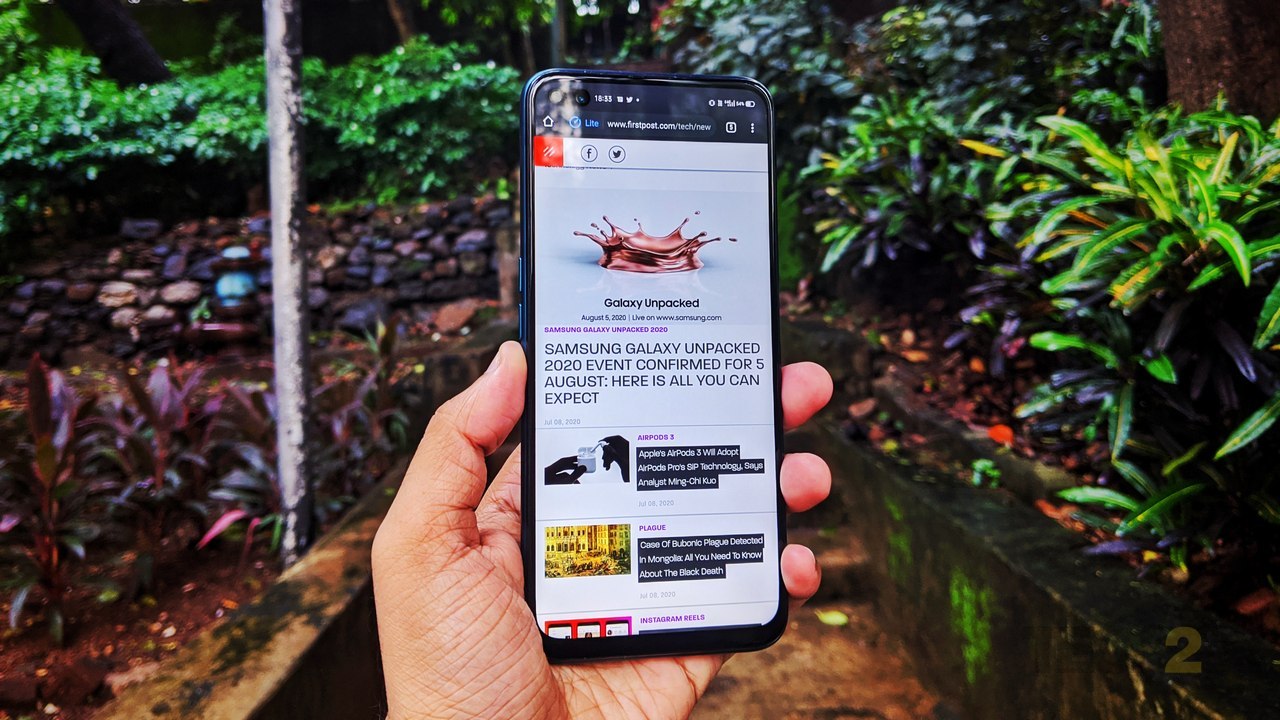
The Realme X3 SuperZoom uses an IPS LCD display with an FHD+ resolution of 1080 x 2400 pixels, giving you a pixel density of 399 PPI.
The highlight of the display is that it supports a 120 Hz refresh rate. It’s a great experience. It looks like higher refresh rate displays are going to become the norm this year, and we should see the price barriers for them going even lower. The Poco X2 already began that trend earlier this year. For someone coming from a regular 60 Hz display, the smooth scrolling on a 120 Hz is a revelation, and you’ll never go back.
The display is good, with great viewing angles. The contrast levels aren’t as great as an AMOLED display, but backlight bleeding wasn’t an issue. You won’t get pitch blacks for dark scenes, but I wouldn’t hold it against the Realme X3 SuperZoom. One thing that is concerning is the brightness levels of the display. It’s not bad, but doesn’t really make things pop when you’re out and about. I maxed out the brightness while watching some Netflix shows and it didn’t really go that high on the brightness levels. I don’t know if it’s a software glitch, as I didn’t see any new updates to fix it, if it were.
Under the ‘Display’ section in the Settings menu, you get an OSIE (Object and Semantic Images and Eye-tracking) which claims to make videos and supported apps look a lot more punchy and colour rich. I couldn’t figure out which apps support OSIE, and honestly, couldn’t really see any difference as I toggled between OSIE on/off. Maybe Realme could give a better explanation of what it does than a strange GIF animation, which doesn’t tell us anything.
Performance is top notch; Realme UI brings minor value additions but also a lot of bloat
The Realme X3 SuperZoom sports an overclocked version of last year’s flagship chipset ― the Qualcomm Snapdragon 855+ ― which ensures that things run great. You have 12 GB of RAM, which lets you keep many apps open at a time, and switching between apps is quick. Games, productivity apps,video streaming – all work well. The benchmark scores are in line with Snapdragon 855+ and are second only to the Snapdragon 865 and Apple’s A13 Bionic processor. Long story short, in real life usage, the phone runs quite fast and you won’t face any lag or random shutting down of apps.
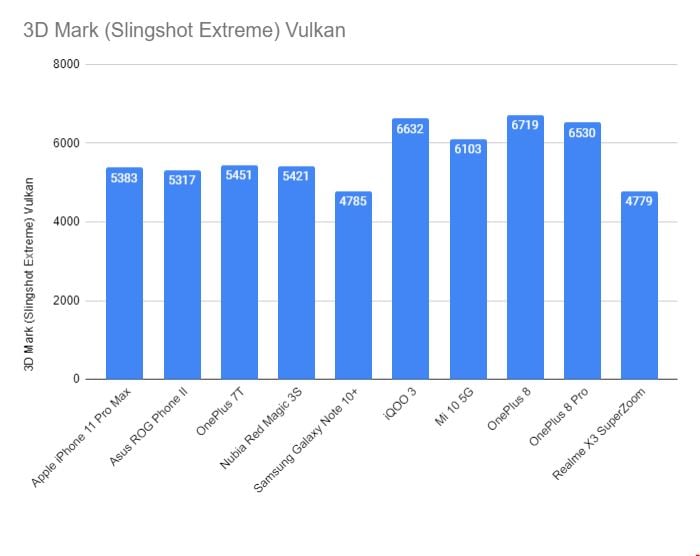
3D Mark
Call quality was great, and I faced no issue with the earpiece, which was quite loud. You only get the bottom firing speaker though, so speaker output is just about average. Yes, it does get loud if you are in a quiet room and you can watch your videos without the need for headphones. But when playing games, your palm blocks the speaker and the sound is muffled. There’s no 3.5 mm audio jack and Realme does not provide any USB Type C to 3.5mm audio jack adapter, so you will need to get one yourself. The lack of a 3.5 mm audio jack is surprising on a phone with a profile as thick as the X3 SuperZoom. Plus, the lack of stereo speakers is sure to irk many buyers.

Geekbench Multi core
Gaming on the Realme X3 SuperZoom is quite smooth as well. I played PUBG Mobile, Asphalt 9, Alto’s Odyssey without any issues. It can play all these games at the highest detail levels. Yes, the phone does get warm on touch if you play more than 20 mins of PUBG Mobile, but it never overheats or shuts down any apps in the process. I also observed the phone getting warm to the touch after shooting around 5-6 videos, followed by still photo shooting. Realme advertises liquid cooling on the phone.

Geekbench Single Core
The Realme X3 SuperZoom comes with Android 10 with the realmeUI skin atop it. This is just a minor update to the ColorOS, with some Realme-specific features such as Realme share, Realme Lab as well as some ColorOS features such as App Cloner (letting you have two instances of WhatsApp, for instance), Game Space (game-focused system-wide controls) and so on. The phone comes preloaded with a boatload of bloatware ― I counted around 18 preloaded apps, of which only maybe 3-4 were actually of any value to me. There’s nothing that stands out from the Realme UI worth talking about. You get your standard set of convenience tools such as navigation buttons, gestures, smart slider, assistive ball, there’s a system-wide dark more and more. The interface worked fine and there weren’t any unwanted glitches observed during the testing phase.
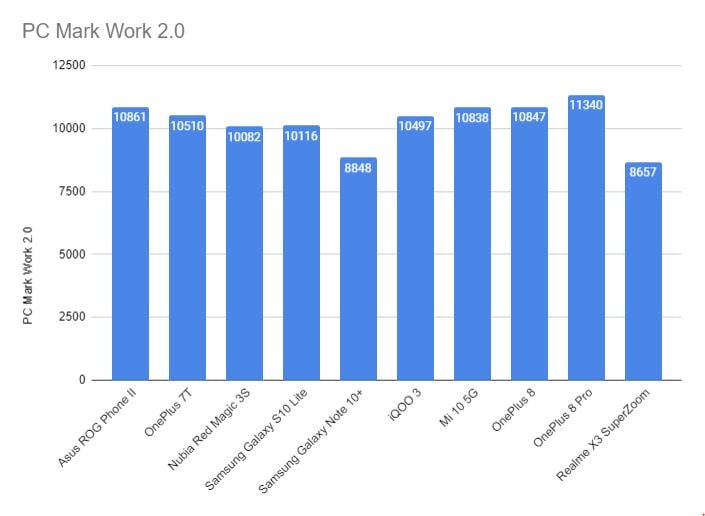
PC Mark
Battery life is good, and you get a lot of settings to tinker with
The Realme X3 SuperZoom comes with a 4200 mAh battery along with a 30 W Dart Charger along with it. The phone easily lasts a day and half on regular usage and around a day on heavy usage, which includes a lot of gaming.
Under the Settings > Battery section there are many different options you can choose between to extract the most out of the battery. There is an ‘Intelligent Power Saver’ option which uses AI to save power in the background. You get a battery percentage, and if there are any tasks sipping battery in the background, you can click on the ‘Save Power’ button. This takes you to another screen, which has more details on what is using power. The ‘Performance’ mode has three sub-sections as well – ‘High Performance Mode’, ‘Smart Performance Mode’ and ‘No Performance Improvement’. ‘App Quick Freeze’ lets you freeze certain idle apps, which puts them in a sort of ‘locked’ mode, so that they can no longer use any power or receive and send notifications in the background. You can tinker around with these settings to extract more usage from the phone.
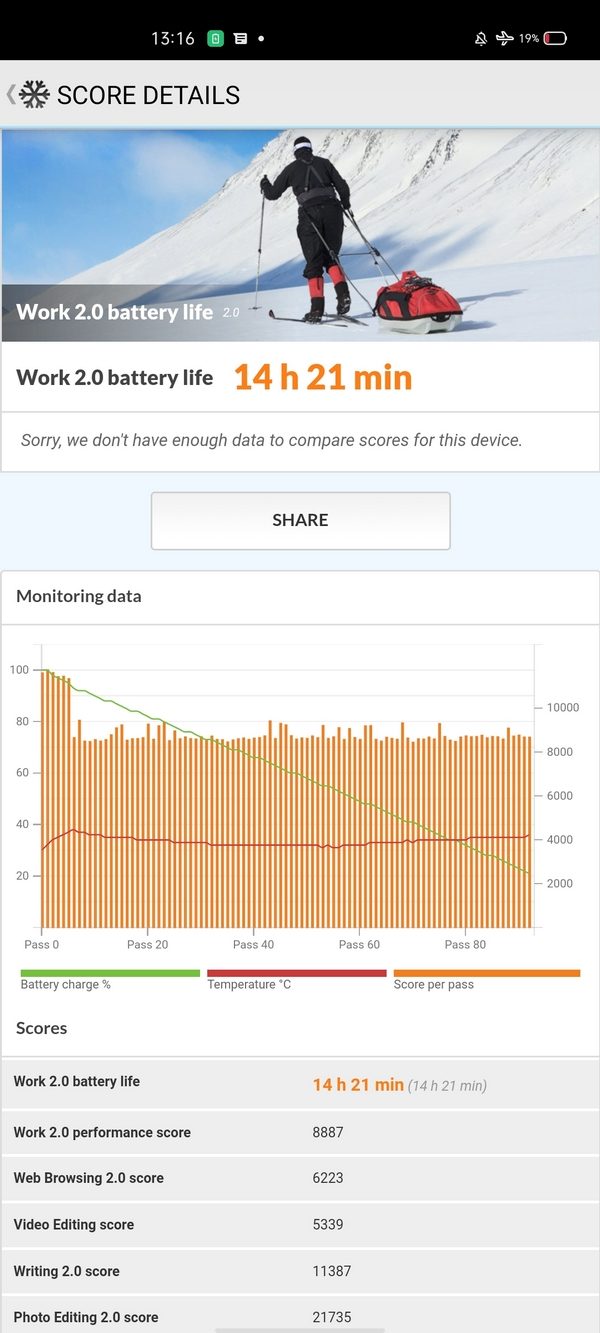
As for charging the device, it’s quick. It took around 60 mins to go from no charge to 100 percent. So even if you are in a rush, you just need a quick 15-minute charge to get you enough juice to see you through a few hours of a work day. Overall, battery life is one department where the phone presents no issues at all.
Build and Design: Quite bland
I kept this portion for last, because honestly, Realme has done nothing innovative here. They locked on to one design for the rear since the Realme 6, and so it continues. Blame it on their prolific launches. Only the COVID-19 lockdown could decelerate Realme’s launch cycle. The Realme X3 SuperZoom makes do with a ― by now ― mature design language. Having seen so many Realme devices with this design, I’d say it’s becoming boring to look at. The quad-camera setup is housed inside a vertical camera module placed on the top left-hand corner of the rear. The module does jut out a bit, but it isn’t too sharp to touch. The glossy design on the back reflects light in a way that shows the dark to light gradation. It does collect fingerprint smudges. The glacier blue colour I received for testing looks quite good. While there is Gorilla Glass 5 on the front, the glass version on the back isn’t known.
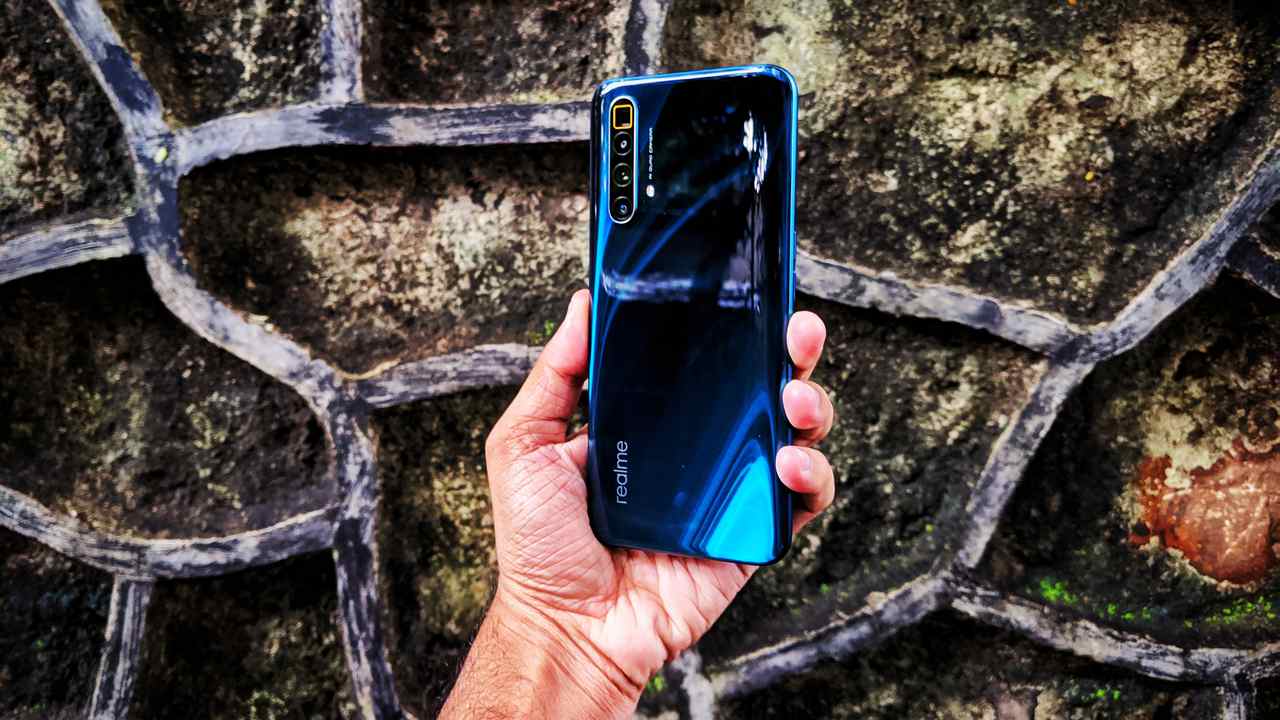
Having seen so many Realme devices with this design, I’d say it’s becoming boring to look at.
There is a plastic frame sandwiched between the glass coverings. The edges are rounded off on both sides, but there is a flat portion on the right hand side which houses the power/standby button, which also houses the physical fingerprint scanner. This is a design that is intuitive and was first used on Sony Xperia devices. The volume rocker is located on the left-hand side. The top and bottom edges of the device have a slightly depressed element, which feels nice. The dual SIM card tray is at the base (there is no microSD card slot), as is a USB Type C port and a speaker grille. The lack of 3.5 mm audio jack on a thick device as X3 SuperZoom begs explanation.
The phone weighs in a hefty 202 g. There is no IP rating for water or dust resistance. When you snap on the bundled transparent case, the phone becomes quite thick, but the display is protected, as the case protrudes a bit around the display. The dual front-facing cameras are placed at the top right-hand corner. There is nothing to complain about in the build and design, except maybe the plastic frame. For a Rs 30,000 plus phone, a metallic build is a no-brainer.
Verdict and Price in India
The Realme X3 SuperZoom is a good smartphone overall. Its major strength is the 5x periscope zoom camera and the dual front-facing cameras, which let you shoot portrait-mode videos. If the periscope zoom is something that you desire, then the X3 SuperZoom is the only offering in this price segment.
There are problems with the cameras as well, especially the ultrawide angle camera which takes some not-so-great photos. The video quality of the X3 SuperZoom is also something not worth writing paeans about. It’s functional and offers the option to zoom in, but that comes at a cost. The display is great, but I am concerned about its brightness levels. The battery is long-lasting, which is helped by a quick charger. The overall performance of the Realme X3 SuperZoom is also impressive.
As you may have noted, there are many compromises you will have to make if you are planning to get this smartphone. On the other hand, if the 5x zoom is something that you can do without, you can consider the Realme X2 Pro which offers a 90 Hz AMOLED display, or the Redmi K20 Pro which offers a much better overall camera quality, and has recently seen a price drop. The OnePlus NORD is expected to launch in a few weeks, and while it doesn’t offer a periscope zoom, it is sure to add more competition to this space.



No comments:
Post a Comment